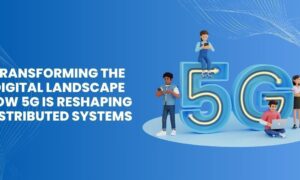Are you tired of slow internet speeds and limited Wi-Fi coverage? Well, get ready to be blown away because we are about to take you on a journey into the exciting realm of advanced connectivity. In this blog post, we will unveil the immense potential that lies beyond ordinary Wi-Fi, exploring groundbreaking technologies that promise lightning-fast speeds, wider coverage, and jaw-dropping innovation. Brace yourself as we dive into a world where homes become smart hubs, cities transform into interconnected ecosystems, and wireless networks evolve to unimaginable heights. Get ready to discover the vast potential of advanced connectivity – it’s time to leave Wi-Fi in the dust.
What is Advanced Connectivity?
In a world where we are increasingly reliant on technology, it is no surprise that the demand for advanced connectivity is on the rise. Whether we are streaming movies, gaming online, or simply checking our email, we expect to be able to do so without interruption. Unfortunately, traditional methods of connecting to the internet, such as Wi-Fi, can often be unreliable and slow. This is where advanced connectivity comes in.
Advanced connectivity refers to any type of connection that is faster and more reliable than traditional methods like Wi-Fi. This can include everything from cellular data connections to satellite internet. In many cases, advanced connectivity is also much more secure, making it ideal for businesses and other sensitive data transfers.
There are a number of different technologies that fall under the umbrella of advanced connectivity. Some of the most popular include:
Cellular Data: Cellular data is becoming increasingly widespread as a means of connecting to the internet. This is because it offers speeds that are comparable to broadband, but without the need for a physical infrastructure (such as cables or telephone lines). cellular data also has the added benefit of being highly portable, meaning you can take it with you wherever you go.
Satellite Internet: Satellite internet is perfect for those who live in rural areas or who otherwise have limited access to traditional broadband services. Satellite internet uses a network of satellites orbiting the earth to provide a fast and reliable connection. While satellite internet can be expensive, it is generally much faster than dial -up or DSL.
Fiber Optics: Fiber optics is the newest and fastest type of internet connection available. It uses a network of strands of glass to transmit data, allowing for much higher speeds than traditional broadband. As such, it is becoming increasingly popular with businesses who need to transfer large amounts of data quickly and reliably.
Benefits of using Advanced Connectivity
Advanced connectivity technologies like 5G and low-power wide-area networks offer a number of advantages over traditional Wi-Fi systems. They provide higher bandwidth, lower latency, and more reliable connections. This can be especially beneficial for resource-intensive applications like streaming video or gaming. In addition, advanced connectivity can help reduce the costs of deploying and managing network infrastructure.
Different types of Advanced Connectivity TECHNOLOGIES
Advanced connectivity technologies are constantly evolving, and there are different types available to meet different needs. Here is a look at some of the most popular advanced connectivity technologies:
1. Ethernet: Ethernet is a wired connection that uses cables to connect computers and other devices to a network. It is one of the oldest and most commonly used types of advanced connectivity technology.
2. Wi-Fi: Wi-Fi is a wireless connection that uses radio waves to connect devices to a network. It is the most common type of advanced connectivity technology and is used in home and office networks.
3. Cellular: Cellular is a wireless connection that uses cellular towers to connect devices to a network. It is commonly used for mobile devices such as smartphones and tablets.
4. Satellite: Satellite is a wireless connection that uses satellites to connect devices to a network. It is commonly used for rural or remote areas where other types of connectivity are unavailable.
5. Fibre Optic: Fibre optic is a wired connection that uses optical cables to connect devices to a network. It offers high speeds and reliability, making it ideal for businesses and other high-demand users.
Using AI to promote and enhance Advanced Connectivity
We are in the midst of a connectivity revolution. The rollout of 5G networks is providing us with unprecedented access to data and new opportunities for creating efficiencies in how we live and work. But 5G is just the beginning. There are other advanced connectivity technologies that are being developed that will have an even greater impact on our lives.
One such technology is artificial intelligence (AI). AI has the potential to transform a variety of industries, including healthcare, transportation, and manufacturing. And its use is only going to increase as we find new ways to harness its power.
In healthcare, AI is being used to develop personalized medicine, diagnose diseases earlier, and create treatments that are more effective. In transportation, AI is being used to develop self-driving cars and improve the efficiency of logistics operations. In manufacturing, AI is being used to optimize production lines and create products that are customized to each customer’s specific needs.
The possibilities for using AI to promote and enhance advanced connectivity are endless. As we continue to find new ways to leverage this transformative technology, we will create even more opportunities for connecting people and devices in ways that make our lives easier and more productive.
Real World Examples of Advanced Connectivity
In the past few years, advanced connectivity technologies such as LTE and 5G have started to rollout in different parts of the world. These new networks offer a number of advantages over traditional Wi-Fi networks, including higher speeds, lower latency, and more reliable connections.
One of the most exciting aspects of advanced connectivity is its potential to enable new types of applications and services that were not possible before. For example, augmented reality and virtual reality are two areas that could be transformed by the higher speeds and lower latency offered by 5G.
In addition, advanced connectivity can also enable new business models and create new opportunities for companies. For example, a company could use advanced connectivity to offer a service that allows customers to remotely control their devices from anywhere in the world.
The potential of advanced connectivity is vast, and we are only beginning to scratched the surface of what is possible.
Challenges of using Advanced Connectivity
As with any new technology, there are always challenges that come along with using it. Advanced connectivity is no different. Some of the challenges associated with using advanced connectivity include:
– Ensuring compatibility with existing devices and systems: One of the challenges with using advanced connectivity is ensuring that it is compatible with existing devices and systems. This can be a challenge because often times advanced connectivity uses different protocols than what is currently in place.
– Getting buy-in from stakeholders: Another challenge associated with using advanced connectivity is getting buy-in from all stakeholders. This includes getting approval from upper management as well as getting support from IT staff. Without buy-in from all stakeholders, it can be difficult to implement and use advanced connectivity.
– Security concerns: One of the main concerns with using any new technology is security. With advanced connectivity, there are often new security risks that need to be taken into consideration. These risks need to be carefully evaluated before deciding to implement advanced connectivity.
Conclusion
Today’s technology is advancing faster than ever, and it’s no surprise that the world of networking and connectivity is evolving with it. From 5G to Wi-Fi, there are now an unprecedented number of options available for people looking to connect their devices in a more efficient way. It is essential for us all to stay informed about these kinds of advancements, as they can offer significant improvements over traditional methods such as Wi-Fi. Understanding how each type of advanced connection works can help us unlock the full potential behind our devices – and beyond.



































